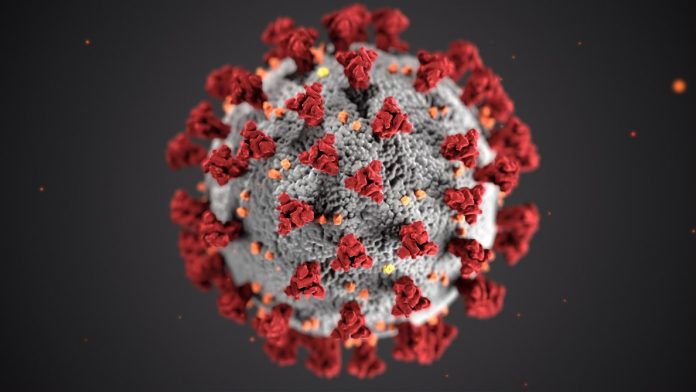Before the novel coronavirus startled the world, the relations between China and the United States had considerably strained, leading experts to term the emerging situation as a ‘New Cold War’. Now the pandemic has soured their relations further with both the countries locking horns and accusing each other for creating and mishandling the virus.
There is no denying that competing national interests are a key feature governing relations of nations at the international level. But there are certain areas – sometimes created by circumstances – where nations ought to cooperate. The global pandemic, COVID-19, is one such area.
But Washington and Beijing have been in a confrontation mode with leaders from both sides strictly adhering to blame game. Neither of the two sides appeared to realize that the confrontation would not serve their long term interests. But it would exasperate their tense relations and derail their much-needed fight against the crisis ignited by coronavirus.
The leadership from both the countries need not lose sight of the gains which humanity can obtain if they jointly take on the pandemic. Being the world’s two strongest economies, their joint fight against the deadly disease can not only enable the world to reduce the death toll but also will mitigate the resulting economic catastrophe. Ideally, working together would quickly respond to the most immediate requirements like the shortage of ventilators, the lack of masks and other protective equipment.
The silver lining is that on Friday (27 March), President Trump and Chinese president Xi Jinping held a phone call about the coronavirus outbreak in an attempt to repair strained relations, following weeks of traded barbs over the virus. Xi told Trump that the US-China relations had reached an important juncture.
“Working together brings both sides benefits, fighting hurts both. Cooperation is the only choice,” he said. Xi said he hoped the US would take “substantive actions” to develop a relationship that is “without conflict and confrontation” but based on “mutual respect and mutually beneficial cooperation.”
After the phone call, Trump tweeted that he had a “very good conversation” with Xi, adding that China had “developed a strong understanding of the virus” and was working with the US.
Meanwhile for China, the COVID-19 pandemic offers a vital opportunity to enhance its area of influence. Beijing, seeking to earn goodwill – is providing medical and financial support to the nations struggling to contain the deadly disease. China’s outreach in European countries like Italy, Spain, and Serbia – is likely to receive massive appreciation and evoke positive response because America has mostly stayed out of the picture in the region.
The Chinese government endeavouring to deflect attention from the origin and spread of the virus, has been claiming that America has spread the deadly pathogen. Bejiing has expelled American journalists. On the other hand, Trump administration has been referring to coronavirus as “Chinese virus” or “Wuhan virus”. Some American officials have threatened of retribution for China’s alleged role in spreading the virus.
Pertinently, during the Cold War era, the US and the former USSR confronted each other on several fronts across the world. But simultaneously the two superpowers learnt to work together to pursue their vital interests which overlapped. The overlapping interests most notably included nuclear arms control, smallpox eradication and joint space research. The American and Chinese leaders of today should follow suit to manage competition and cooperation in the international stage the same way.
Washington and Beijing ought to cooperate and pursue what they profess. To begin with, they need to undertake certain Confidence Building Measures (CBMs). Trump administration should avoid referring to coronavirus as “Chinese virus”. In 2003, President George W. Bush referred to the new coronavirus, which had China origin, as SARS. President Xi Jinping should allow the expelled American journalists to return, and stop his administration from accusing America of spreading coronavirus. Optimistically, the two leaders’ March 27 conversation over phone is a good start to thaw tensions between the two countries.
Next, Trump administration should appreciate Chinese assistance to Europe and also come up with its own humanitarian assistance to the worst hit countries like Italy, Spain and Iran. These ailing nations need international support to fight the deadly virus. Similarly, Chinese government must welcome and applause the American doctors willing to learn more about the COVID-19 outbreak in China.
The United States and China are key players in multilateral institutions like the U.N. Security Council and G20. The latter played a crucial role in overcoming the global financial crisis of 2008. As powerful members of international community, both of them can not only come up with larger funding to the World Health Organization but also can encourage other strong economies to contribute generously in the form of humanitarian assistance against the current pandemic.
Additionally, China and America are better placed to wear the mantle of leadership and responsibility at other multilateral platforms to lead in global sharing of scientific information about COVID-19, promote coordinated scientific research and help in preventing future epidemics. The two countries’ robust and reputed technological advancement can teach important lessons and practices to counter and contain the virus.
Washington and Beijing have nothing to lose in defeating coronavirus, the common enemy of humanity. Both sides, on the other hand, can learn from each other’s experience and expertise. Working together does not mean that any side is losing or playing a second fiddle to the other. Likewise, the two great powers should bring the world together in a coordinated effort against the pandemic and its deep impact.
The views and opinions expressed in this article are those of the author.

Sheikh Shabir Kulgami is a Kashmiri (Indian) political commentator, analyst and columnist. He writes extensively on South Asia.


